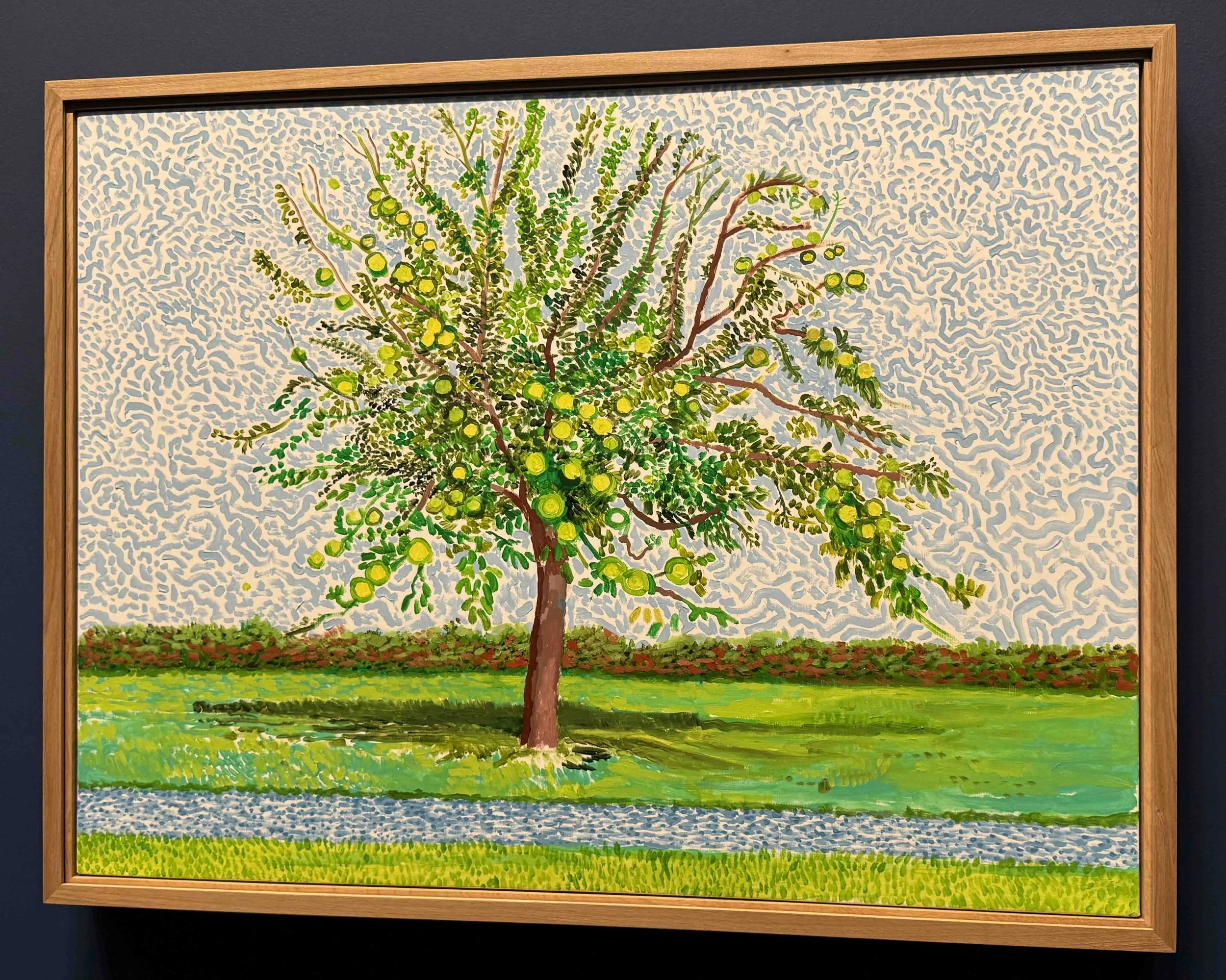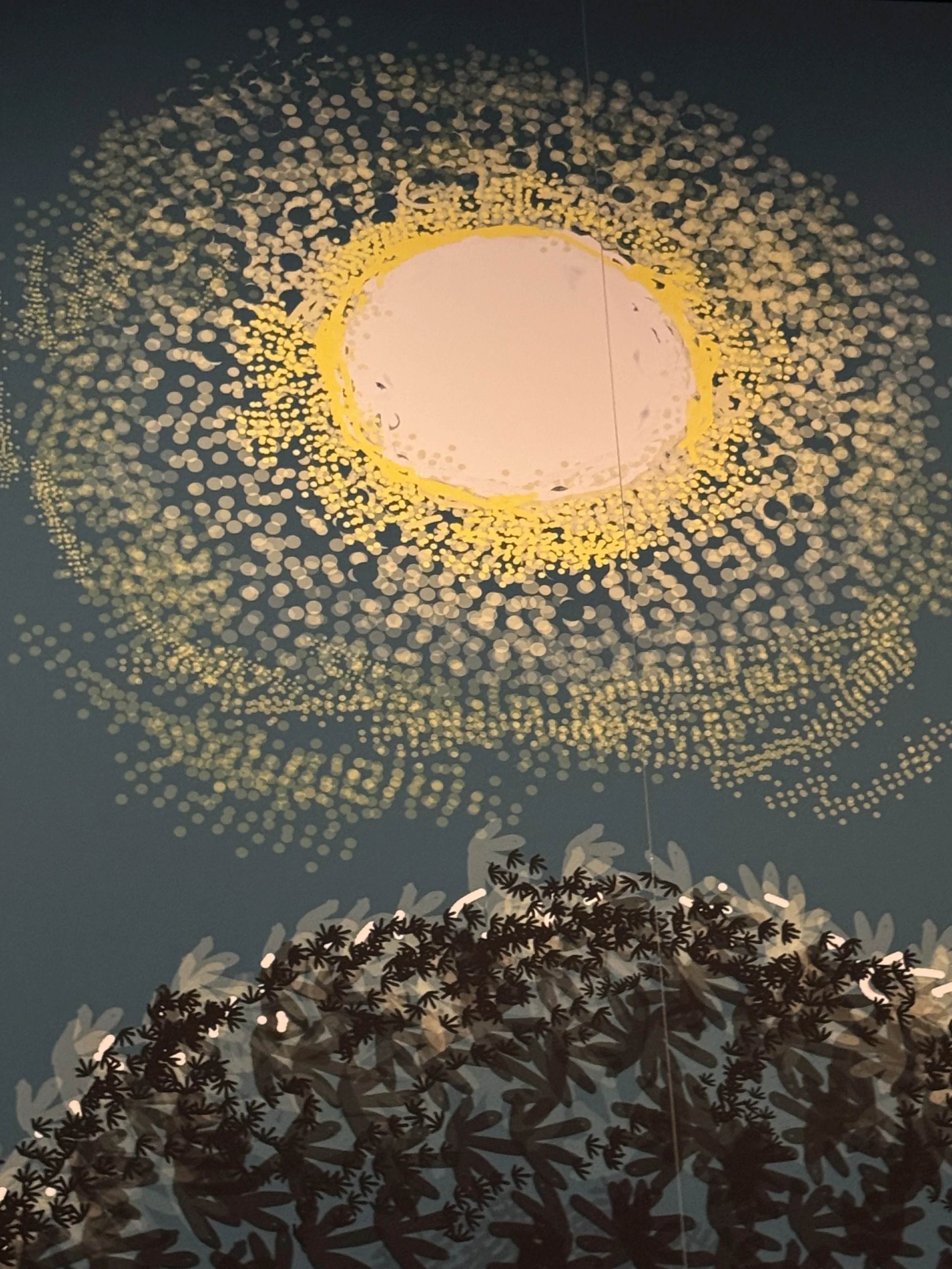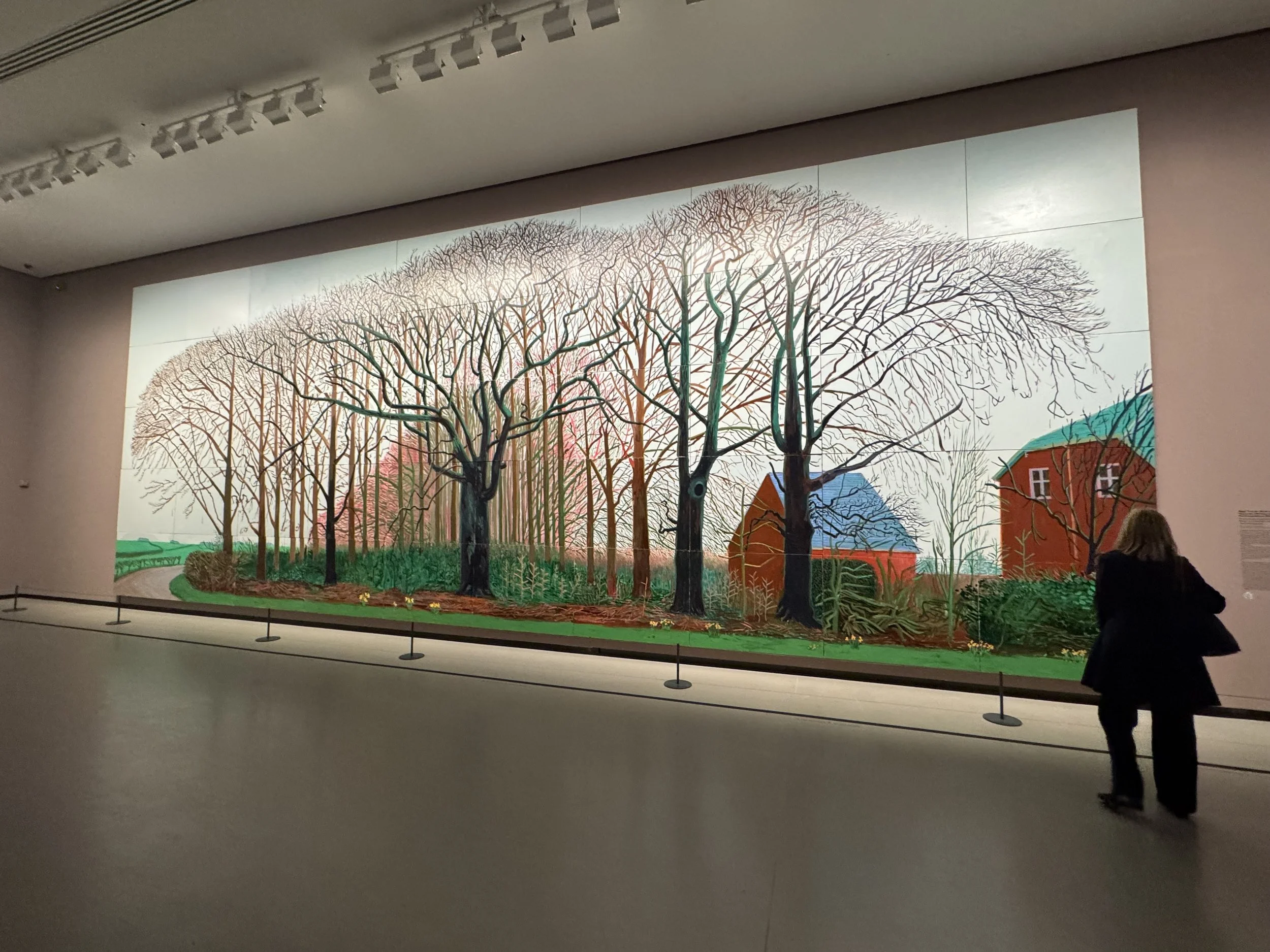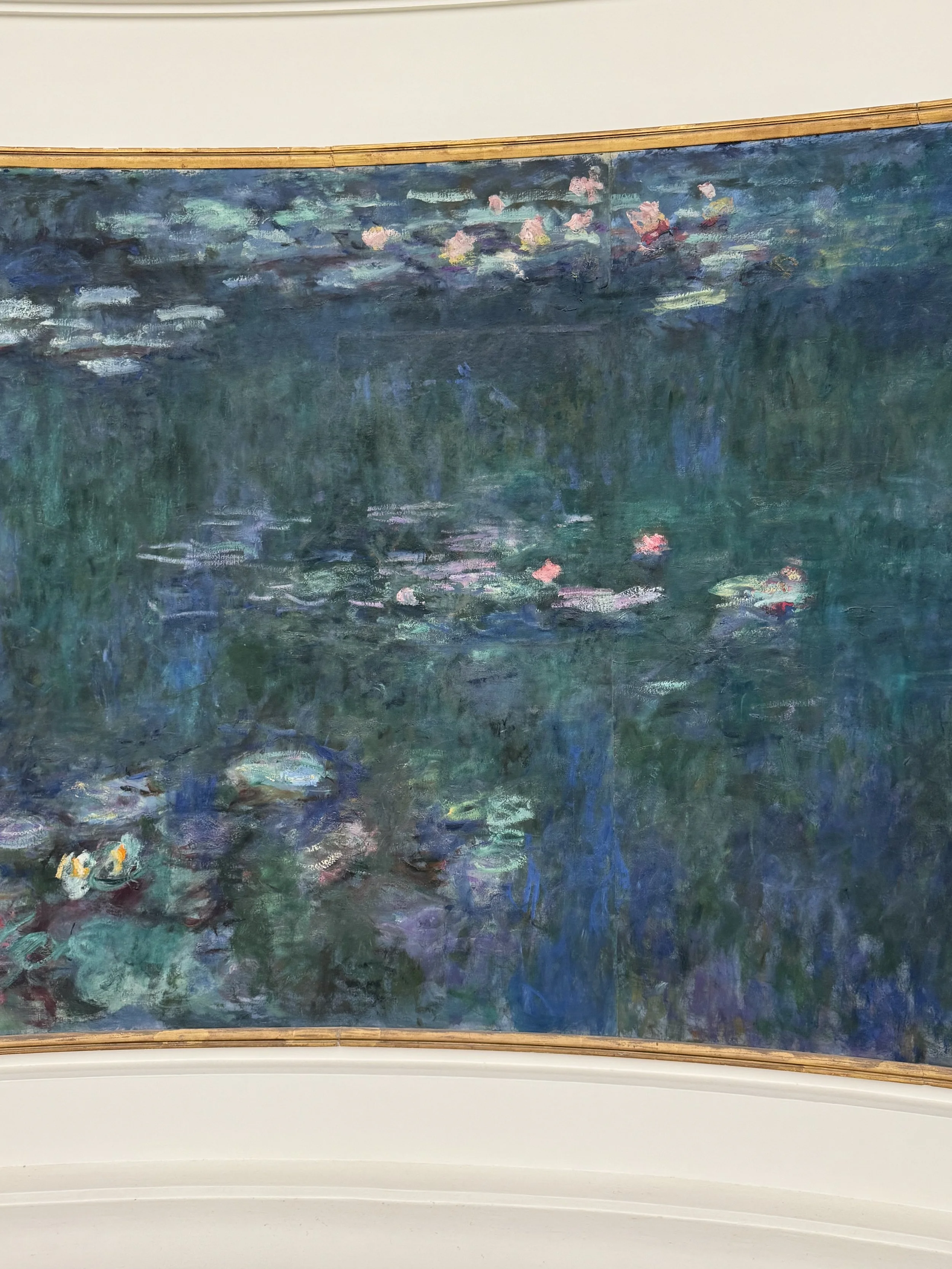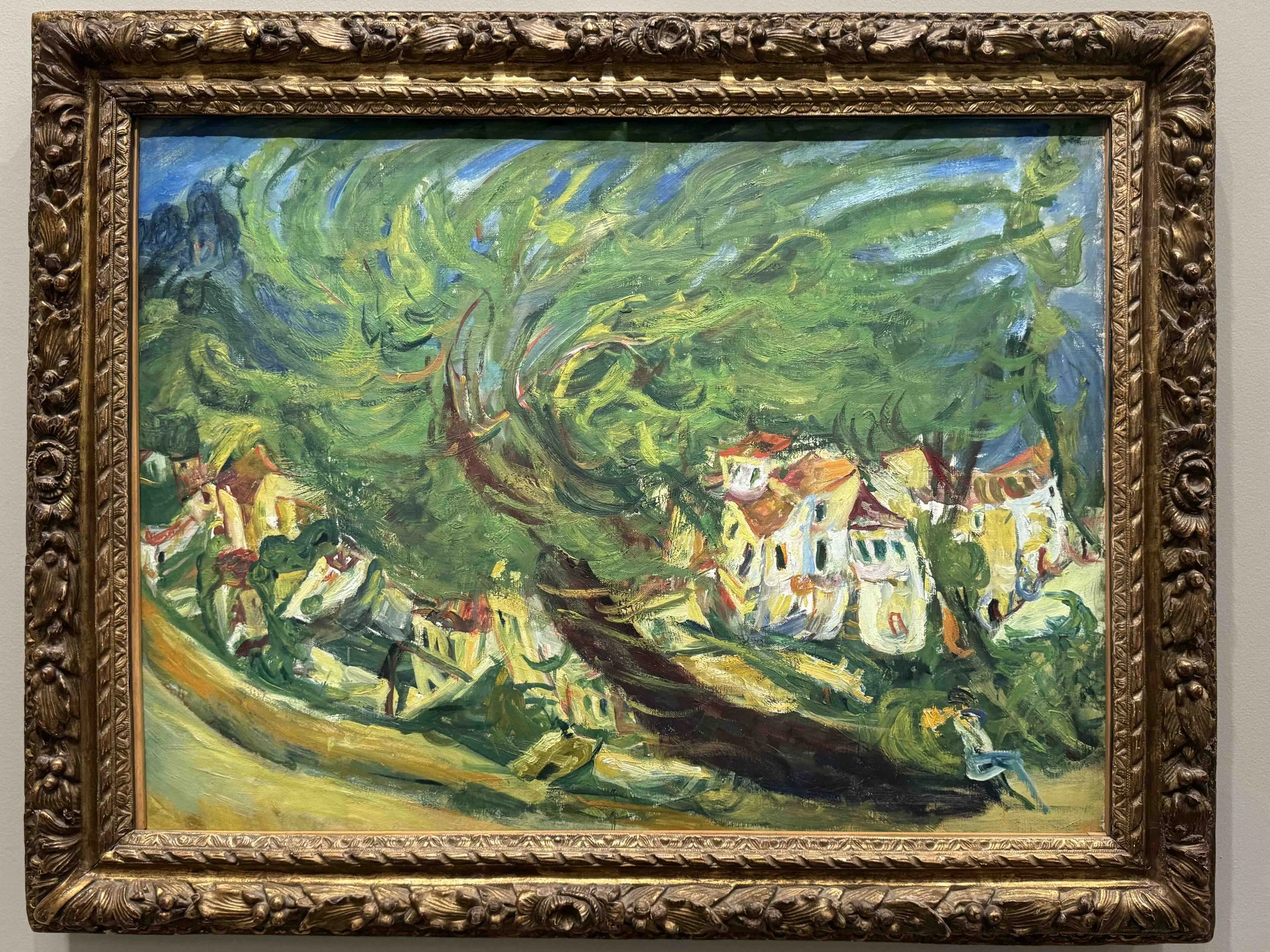Must-See Art in Paris
Here are a few highlights from my April 2025 trip to Paris.
Fondation Louis Vuitton, David Hockney 25
It's really hard to pick a handful of favorites from the more than 400 paintings in this retrospective. Although I absolutely loved this exhibit, it was definitely visual overload, even for one of the world's biggest David Hockney fans. Hockney himself was personally involved in planning every detail of this exhibition, from selecting the paintings down to choosing the paint colors for each room (which, I must say, are absolutely perfect).
Hockney has had a profound influence on my work, from his use of bold color and expressive brushwork to his choice of subject matter and perspective. He was more than a bit obsessed with trees (though not birches, since they aren't common to his native Yorkshire!), believing they were like human figures in the landscape, each with individual personalities. He also felt paintings should never look like a photograph, because they represent the individual artist's vision, and we all view the world subjectively and psychologically, with our memories playing a key role in our perceptions. I could go on and on, but if you're really interested in knowing more about Hockney, I highly recommend A Bigger Message: Conversations with David Hockney, by Martin Gayford.
“What does the world really look like? I know it doesn't look like photographs. The camera sees geometrically, and we must see psychologically. So what does it really look like? I think you have to draw it. The world is very beautiful, but human beings are quite mad." (David Hockney, from the David Hockney 25 exhibition catalog)
Since it snowed right before I left on my trip, and the only signs of life in my Maine garden were a few intrepid crocuses, I was particularly taken with David Hockney's spring paintings. They were absolutely bursting with color and energy.
Hawthorn Blossom near Rudston, oil on two canvases, 2008
Lots of Blossoms on Trees, acrylic on canvas, 2023
The title sounds far more elegant in French: Beaucoup de floraison sur des arbres.
AppleTree, acrylic on canvas, 2019
Each tree painting had a distinct, stylized sky, with the patterns providing additional dynamism.
Another favorite painting from this exhibit was Winter Timber. Maine is one of the most heavily-forested states in the US, and on any drive through rural, northern Maine you will see stacks of timber seemingly everywhere. (You will also fear for your life driving the roads and either a) trying to pass a fully-loaded logging truck as it lumbers slowly uphill and you cannot fight the urge to pass it even though you can’t see what traffic is coming the other way or b) praying that the fully-loaded logging truck that is bearing down on you at a rapid clip as you descend a twisting hill has working brakes.) It’s hard to make a pile of timber beautiful, but this painting manages to accomplish that feat.
Winter Timber, 2009, oil on 15 canvases
While I've always loved Hockney's landscapes, I was also mesmerized by this cozy interior scene, perhaps because there's nothing I like better on a rainy day than finding a good book to read. The elaborate wallpaper design reminded me of Matisse and was an interesting color and pattern juxtaposition next to the blue-checked tablecloth.
Books and Rain, acrylic on canvas, 2023
I live on the coast of Maine, where the spring is cold and rainy and foggy. It has rained every day for the last five days. I know rain, and this treatment of the rain drops on the window panes is superb, as you can see in this detailed image of Books and Rain.
Detail, Books and Rain, acrylic on canvas, 2023
I was also thrilled to walk into a "moon room," consisting mostly of iPad paintings, where the technology really allows Hockney to capture the luminosity of the night sky. I had no idea Hockney had created any moon paintings at all, let alone so many. The moon room immediately follows, and is thematically connected to, a large room full of Hockney’s iPad drawings, titled 220 for 2020. This series is focused on depicting day-to-day changes in light and atmosphere on the local landscape, in much the same way that Monet pursued this subject in his Rouen cathedral or haystack series.
When Hockney first started using an iPad, around 2009, he would often paint sunrises or still lifes in the morning, without getting out of bed. He loved being able to quickly capture whatever inspired him, without having to go to his studio and mix oil paints. He loved the freedom and immediacy that this new technology offered him. In his 2020 series, he found that the iPad enabled him to paint outdoors at night.
Detail, 10th September 2020. iPad painting, printed on paper, mounted on five aluminum panels. I included this photo in the blog even though it has what unfortunately looks like a scratch in the image. Not sure what that’s about — I hope the work itself isn’t scratched!!
And of course, it was hard not to be wowed by the largest painting I have ever experienced in person, the monumental winter landscape Bigger Trees near Warter, which consists of 50 separate panels spanning 15 feet by 40 feet.
David Hockney, Bigger Trees near Warter, 2007, 15 feet by 40 feet
What was waiting for me at the very end of the exhibit but a painting of the midnight sun! I mean, isn't it about time Hockney discovered the beauty of Norway??
Midnight Sun, Norway, 2003, watercolor and gouache on paper
If you were lucky enough to see this exhibit, or plan to see it before it leaves in September, I'd love to know which paintings resonated the most with you!!
Musée de L'Orangerie
This gem of a museum was even more packed than the last time I visited, despite the ticket office now requiring (far in) advance reservations. But spending time looking at the Monets (as well as the Modiglianis, Matisses, Picassos, and other works) was well worth the wait and the crowds!
The museum's name comes from the building's original purpose in the 1850s - a winter shelter for the orange trees that lined the garden of the Tuileries Palace. The greenhouse had a glass facade facing south along the Seine to let in the sun's light and heat. The north-facing façade was almost entirely windowless, to avoid the north winds. The building went through many uses and iterations, including serving as living quarters for French soldiers on leave from the trenches in World War I, before being converted into an art museum in the late 1920s. Claude Monet was invited by his friend, Prime Minister Georges Clemenceau, to display his large-format water lilies in the museum. (He had begun working on these in 1914 and expanded this series until his death in late 1926.) Monet partnered with the architect to ensure the building design showed these paintings off at their best, but they were not installed until after his death. The multiple canvases - all nearly seven feet tall and totaling over 328 feet long - are hanging in connected oval rooms with skylight domes. As the sun's rays shift through the filtered skylights, the paintings dance with light.
Downstairs in the permanent collection there was a fabulous, large abstract by an American painter, Sam Francis, inspired by Monet’s water lily series. Francis spent a decade in France in the 1950s, seeing the water lily paintings for the first time when the museum reopened in 1953. He titled the work In Lovely Blueness after a poem of the same title by German Romantic poet Friedrich Hölderlin. The lyricism of this painting and Francis’s other paintings of this period established his reputation as a leading colorist of the postwar era.
Sam Francis, In Lovely Blueness, oil on canvas, 1955-1957
A new favorite of mine from the permanent collection of L’Orangerie is a painting of Notre Dame by Maurice Utrillo that manages to convey the delicate facade and stained glass windows of the cathedral with minimal detail. It’s a true masterpiece of suggestive brushwork; our eyes somehow magically fill in all of the little details that he left out. The painting also has more vibrant color than many of Utrillo’s cityscapes. Utrillo, who was born in Montmartre and favored Parisian city scenes, often painted with a muted palette.
The rectangles of color in the foreground are a little hard to decipher, and I’m not sure the museum’s explanation makes a lot of sense:
In Maurice Utrillo's 1909 painting Notre-Dame, the red in the foreground is not the cathedral's doors but rather a red-painted wall of a building situated on the left side of the composition. This wall is positioned in front of the cathedral's façade, contributing to the overall composition.
The central red doorway of the cathedral itself is depicted in the painting, but it is not the primary focus of the red elements in the foreground. Utrillo's use of red in this context serves to add a contrasting color to the otherwise muted tones of the cathedral's stonework and the surrounding architecture. This choice enhances the visual interest and depth of the scene.
Maurice Utrillo, Notre Dame, oil on cardboard, 1910
Detail, Maurice Utrillo, Notre Dame
And there were two small rooms full of rather frenetic, distorted landscapes by the Belarus-born Expressionist Chaïm Soutine. Most were a little over-the-top for me, but this animated tree painting that he created while living in the Pyrenees struck a chord with me:
Chaïm Soutine, Arbre couché, oil on canvas, 1923-1924
Like many artists in Paris at that time, Soutine struggled financially, particularly in his early years in France. But once his work was discovered and collected by Albert Barnes (of Barnes Foundation fame, which now has one of the largest collections of his work) he had sufficient money to travel and to buy lots of paint and lay it down in luxuriously thick impasto strokes.
————-
This is the first of two blogs on art in Paris. The second, which I’ll write some time in the next few weeks, will contain images from the Musée Picasso and the Musée d'Orsay.
If you enjoy reading my blog posts, please consider signing up for my monthly newsletter here:
https://lp.constantcontactpages.com/sl/4V6bXBh
My newsletter contains additional additional art reviews, studio tips, a peek at works in process, inspiration photos from coastal Maine, and early access to the occasional studio sale.


